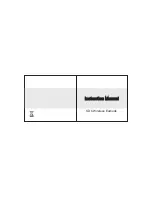
Position the microphone properly by pulling or pushing the boom along the slide.
Switch between left and right ear wearing style simply by rotating the microphone boom. Hold on to the earhook while gently
turning the boom.
For the dual-ear versions, also rotate the two earhooks.
Adjust the microphone boom to follow the shape of your face by gently bending the soft steel on the cable hanger.
Adjust the angle of the cable run, also by gently bending the soft steel (see arrows). Position the cable as shown on the picture for
securing the position of the microphone.
The cable relief on the dual-ear version should be fixed in the clip that also holds the two wires on the mount.
Always leave the protection grid on the d:fine
TM
4166 Omnidirectional & 4166 Directional capsules, as it protects the inner grid and
offers protection against wind and breathing noise. The protection grid is replaceable.































